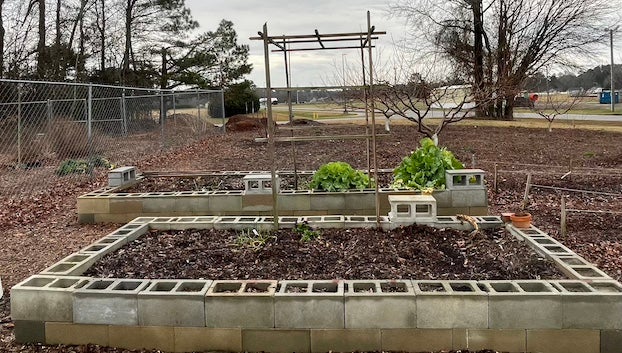Raised beds: the solution for must-have plants
Published 8:56 am Thursday, May 18, 2023
|
Getting your Trinity Audio player ready...
|
One of the concepts I like to teach is Right Plant, Right Place. There is this thing in horticulture called plant culture. Plant culture is just simply what makes plants happy, what conditions they like to grow in. I sometimes phrase it another way, what do you have to offer your plants?
We want your plants to not only survive, but to thrive. The first step in ensuring your plants flourish is give them the right conditions. Sometimes we can create the right conditions, other times, it is a constant struggle against nature.
Around Veteran’s Day last year, my wife and I took our youngest daughter to Florida. We visited a branch of SeaWorld called Discovery Cove. It was the absolute coolest place ever. We went with the sole purpose of swimming with a dolphin. They a fabricated reef in which you could snorkel around with exotic fish and even come up to a glass wall behind which there were all different species of sharks. There was a great lunch spot on site and a lazy river. But this one was huge and it went through waterfalls, a cave and even had a stopover at an aviary. My daughter loved all of this too because she literally had birds eating out of her hand.
There were really cool things for me also, being the plant nerd that I am. There were plants and trees everywhere. It felt like you were in the jungle at times with rolling waterfalls, trees, and vines. Most of the plants were things we can only grow as houseplants here in North Carolina. We don’t have the right place for their plants.
Plant culture includes attributes such as climate like this example from Florida. It also includes attributes such as sunlight or shade and cold or warm season. I am working with Hyde County to help them establish a small orchard example. One of the project stake holders wanted to plant four Honeycrisp apple orchards. The problem is, being developed in Minnesota, Honeycrisp is happiest in a colder climate with little to no humidity. They do great in places like Michigan, New York, and Minnesota but here in North Carolina, they are prone to all kinds of disease and insect pressure. Ultimately, they will not survive here. Our plants have to be adapted to hot summer, mild (occasionally cold) winters, high humidity and a good amount of rainfall. There are local conditions too that we have in Beaufort County such as soil type. For example, along River Road there is a deep sandy soil but on the south side of the river there are thick clays. Moving towards the northeastern section of the county there are even naturally occurring organic soils. This diversity causes us to have to choose different plants due to the soil type.
Heavy clays are often poorly drained and most plants do not like wet feet. Deep sand soils tend to be over-drained so plants will display drought conditions much quicker than plants in other parts of the county. Still yet, the organic soils tend to be lower in pH causing some not to grow well there. All these things can be overcome in the short-term but the long-term solution is to grow things that are happy in those conditions. We have plants that like to have wet feet occasionally. We have plants that like to be on the dryer side. We also have plants that like to grow in lower pH soil.
What if it is just something you have to have? Many of us like to have fresh veggies from the garden. In our new house, the soil is a heavy clay. I could disc and disc every year to break it up and then add compost for the next 5 – 10 years or I could put in some raised beds. These are constructed out of almost anything from composite decking to cinder blocks or even just plain old plywood. The important thing is to make them no more than four feet wide and however long you want. Most of us can easily reach across the four feet or even two feet from either side so we can maintain the beds. Beds can even be elevated so your back doesn’t hurt from bending over to maintain them. Beds will need to be a minimum of 10 inches deep to accommodate the roots of larger vegetables. Fill them with a mixture of manufactured soil and compost, then plant until your heart’s content. Cover any bare soil with mulch to help suppress disease and control weed pressure in your new raised bed garden. I have been busy planning my raised beds but I haven’t installed them just yet.
If you are itching to learn more about plant culture or have an issue in your home garden or landscape, send your questions to Gene Fox, Consumer Horticulture Agent with the North Carolina Cooperative Extension Service, please call at (252)946-0111. Extension Master Gardeners are available to answer your questions through our Greenline on Mondays and Wednesdays from 10-12 or through our new Facebook page, Beaufort County Master Gardeners.
Until then, Happy Gardening!






